
Did you know that in the Jewish quarter of Girona...?
In this section we will answer common questions regarding Jewish women and men from Medieval Girona. Click on the question to see the answer.
Do you have any other question? You can contact us at reserves.callgirona@ajgirona.cat
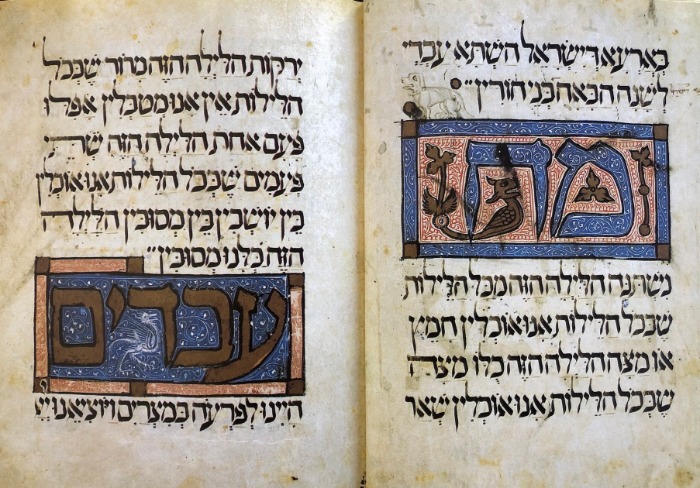
During the Pesach Seder, the celebration that marks the beginning of Jewish Passover, families read the Haggadah, which contains the narration of the Exodus from Egypt. Haggadah texts are ancient works that usually include tales and legends with ethic, historic and religious background.
The oldest Haggadot preserved are illuminated manuscripts from the 13th-15th centuries, many of them produced in Catalonia. It is believed that the Jewish families that left their home after the attacks in the 14th century or following the 1492 Decree of Expulsion took them out of the country. The most outstanding are the Barcelona Haggadah, the Golden Haggadah (both of them preserved in the British Library), and the Sarajevo Haggadah (preserved in the National Museum of Bosnia and Herzegovina), the three of them illuminated in Catalonia during the 14th century. The Museum of Jewish History displays some facsimile reproductions.
On the first night of Pesach, Jewish families celebrate the Seder, a ritual feast that marks the beginning of Jewish Passover, with a special meal. They use a Seder plate (ke'ara) containing six symbolic foods to evoque the story of the Exodus from Egypt:
Maror: typically romaine lettuce, it's a bitter herb that symbolizes the bitterness and harshness of the slavery endured by the Jews in Ancient Egypt
Chazeret: another bitter herb, like the horseradish root
Charoset: a sweet, brown, pebbly paste of fruits and nuts, representing the mortar used by the Jewish slaves to build storehouses on Ancient Egypt
Karpas: a vegetable other than bitter herbs (usually celery) which is dipped into salt water
Zeroa: a roasted lamb or goat bone symbolizing the Pesach sacrifice (in the old times a lamb was offered in the Temple in Jerusalem). It's not eaten nor touched, as it is a visual memory.
Beitzah: a roast egg (usually a hard-boiled egg roasted) that symbolizes the mourning for the destruction of the Temple (eggs are served in funeral wakes), and is neither eaten nor touched.
There is a seventh symbolic food out of this plate, which is a pile of three matzot. Matzah or unleavened bread commemorates the haste in which the Israelites left Egypt, not allowing their bread dough to rise. It is believed that the medieval seals found in Puigcerdà and l'Espluga de Francolí were used to mark this bread for Passover, because of their inscriptions.
You can find a sample of Seder plate in the core exhibition of the Museum of Jewish History.
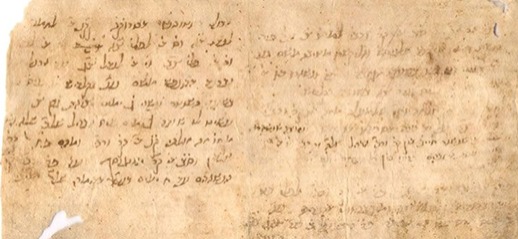
In the Middle Ages, the inhabitants of Girona used Catalan as a daily basis. The Jewish community wasn't an exception, and it was also their common oral language, used within the members of the community as well as with Christians. Obviously they also learnt Hebrew, as it was the prayer and written language. Hebrew (Hebrew characters and Hebrew words) was used for all documents created by the community regarding liturgy, prayers and official reports; aljamiado (Hebrew characters and Catalan words) was used in some cases, mostly in documents related to daily life: reports on purchases and sales, lists and other ordinary records.
At the website of the Historical Archive of Girona you'll find some samples of this documents.
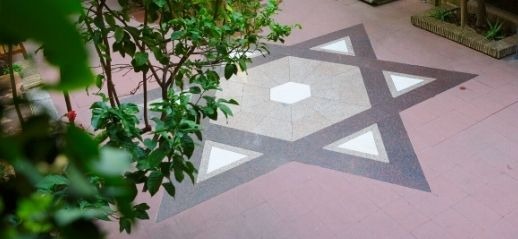
As Eduard Feliu states, "in Middle Ages, Catalaonia, or rather the counties that formed Catalonia, weren't part of Sefarad in Hebrew literature". During the Medieval times, the word "Sefarad" refered to the south of the Iberian Peninsula, the muslim territories of al-Andalus. The north Christian kingdoms were usually called "Edom land", but at the same time every kingdom was described with their specific name: Castilla, Aragon, Mallorca… It was until 15th and 16th centuries that Sefarad became the common Hebrew name to designate Spain.
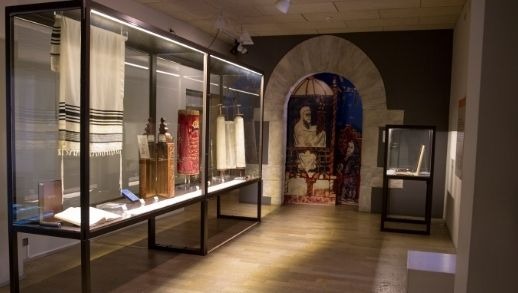
Following Jewish law, people entered the synagogues through a small covered street (access to the temple and school must always be through a lateral road) that led to the community building (schola), consisting of baths, wells, cloister and other joined rooms used for council and leaders meetings, shelter areas for passersby or homeless, and a school for children. Women, when they attended the synagogue, had to pray in a separate room from men; they accessed this are, sometimes, through a special street (women's street). From there they were able to follow prayers led in the main room, where men gathered, as the Jewish tradition states that they are responsible for reading the Torah.
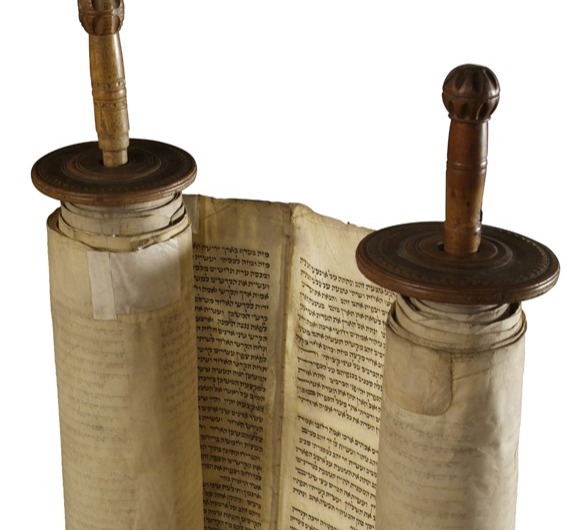
Documents state that the first Jewish families arrived to Girona in 898 and established in the upper part of the city, near where today the Cathedral of Girona and the Episcopal Palace are located (setting aside that these buildings were built a few centuries later). However, there's not enough documentary and archaeological data to provide evidence on the physical existence of a synagogue in this area. Maybe they just had a meeting and praying area, or perhaps, indeed, they had a religious facility. Instead, we do have well documented the bigger and more important synagogue the city had. This was the largest and most important in the history of the community. It was used until 1420, when queen Maria, lieutenant of her husband, king Alfonso the Magnanimous, ordered its definitive closure. The synagogue was located on the west side of the current Força street and faced the wall of the current Ballesteries street. It had a main room and a small one below for women, a mikveh or ritual bath feeded by the Onyar river. It also had a room dedicated to study of sacred texts, courtyards with fountains, wells and springs and maybe other rooms dedicated to study, prayer and community organization.
The last documented synagogue was located in the upper part of the current Bonastruc ça Porta Centre, next to the small street of Sant Llorenç (at the time, Aninai street). Despite it was much smaller and humble, it had a room for men, a smaller one for women, and a mikveh. It had adjoined rooms for the community, such schools or the butcher's shop-slaughterhouse. It was built in 1435, thanks to a special permit issued by queen Maria, inside a complex of courtyards and houses located in the "smaller Jewish quarter", called like this after the closures and delimitations to the Jewish quarter at the end of the 14th century and the beginning of the 15th. It was active until 1492, when the Alhambra Decree (also known as Edict of Expulsion) forced the community to sell it before leaving.
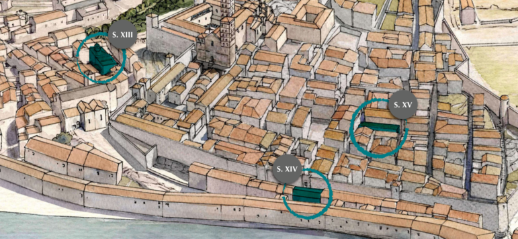
The oldest documented mikveh in Girona is from 13th century. It was located inside the public baths (the current Arab Baths), in a room rented specifically by the Jewish community to be used as a ritual bath or mikveh. This is stated by the responsum written by Rabbi Salomó ben Adret of Barcelona (Rashba), addressed to the wise Jewish men at the end of the 13th century. The reasons for the use, very uncommon, of a public space as a place to fulfill the Jewish ritual can be probably found in the destruction of the Jewish quarter by the Almogavars in 1285. After that, the Jewish community presumably didn't have a proper and suitable mikveh and, while waiting for the reconstruction of their synagogue and mikveh, they rented a room in the public baths of the city.
The main mikveh of Girona's community, in the 14th century, has been located near the Ballesteries' walls and it would seem that it was feeded by the water of Onyar river. It probably was the most wide and beautiful bath in all the Jewish history of Girona. Today there are very few physical remains, some steps allow us to imagine the way down to the purifying pool. However, its traces can be followed perfectly through the documents in the archives, for example with the selling due to the expulsion in 1492.
In 1434, after the closure by royal decree of the synagogue and its joined rooms, the community bought the lands to build a new synagogue, with all needed rooms for a life in community. In that part inside the Jewish quarter, there was already a cistern or maybe wells from very old times, that would give the community the pure water needed for the mikveh ritual. This archaeological remains are part today of the core exhibition of the Museum of Jewish History.
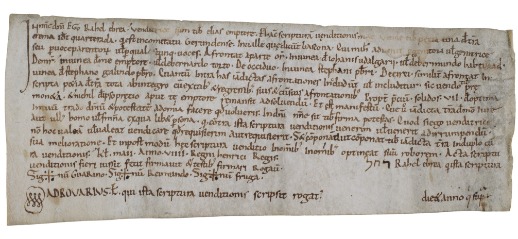
In 1047 Rachel, a Girona Jewish resident, signed a sales document in Hebrew. In this way, she transferred her land, inherited from her parents, to a man called Elias. The land was located in the Bascona basin (today Sant Daniel), an area devoted to viticulture, and was surrounded by vineyards belonging to Christians. It seems that Rahel could write, which was not common in those days. She signed the document in his own hand. What stands out here is that Rahel acted on her own individual entity and identity, she did not need a male reference to make a legal and legalized transaction of her property.
During the Medieval Ages, people from the Jewish quarter of Girona bought and sold different properties around the city. They also received lands or windmills from the king in gratitude for their service to the crown. These purchases and sellings sometimes were done in an individual capacity, some others on behalf of the whole community, as was the case of the synagogue buildings and the land for the cemetery. Finally, in 1492, all private and communal properties were sold quickly and at a loss, as a result of the royal order of conversion to Christianity that prevented them from continuing to live in the territories king Ferdinand.
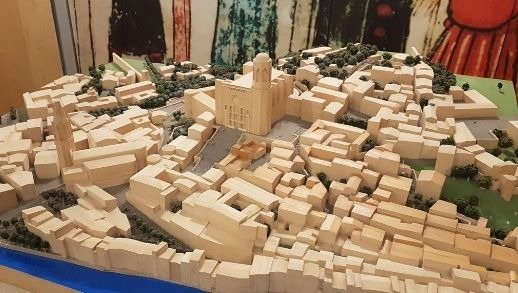
The word call (Jewry) comes from the Latin term callis and designates the neighborhood where Jews lived within the urban area of medieval Catalan cities. The call was born mainly because the Jewish population needed a place where they could develop a ritual and religious life based on the tradition of Israel. A space to pray, study and meet, such as the synagogue, a purification bath (mikveh) that would guarantee the essential ritual of purity in Jewish life and a slaughterhouse that would provide the kosher meat to the community (suitable, by law). The Girona call was formed around those essential spaces for community life.
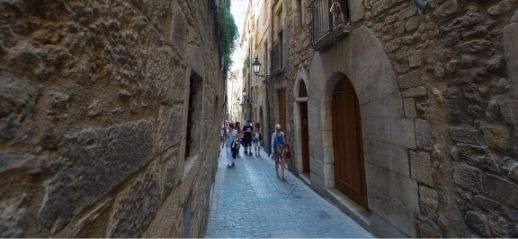
The wide urban space that had this street was known as “Força Vella” (Old Fortress), in reference to the first walled enclosure of the city of Girona. The street follows the route of the Roman Via Augusta and in the Middle Ages it served as the main axis of the Jewish quarter, which was only a sector of the Old Fortress. From the 13th century and until the 14th-15th (1391-1415), in its highest part, next to the stairs of the Cathedral, it was the Main street of the Call (Jewish quarter). Due to the attack on the Jewish quarter on the night of Saint Lawrence in 1391, it was renamed Sant Llorenç street and today you can still see a small urn with an image of this saint. In the middle of the 17th century, it began to be called Força Street, a name that refers to the old name of this sector of the city.
Photo: O. Vall. Arxiu d'Imatges Patronat de Turisme Costa Brava Girona
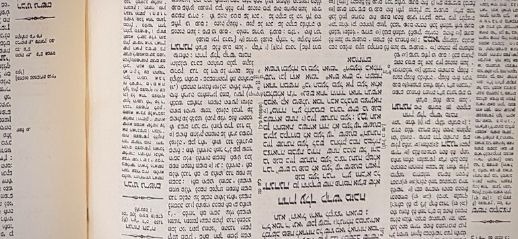
The Talmud is an explanation of the Torah, a guide for daily life. It collects comments and deliberations that the sages and scribes made around the Torah. Formerly they were transmitted orally but, especially after the destruction of the Temple in 70 AD, they had to be writed. The Talmud is compiled between the 2nd century BC and the 4th century AD, in Aramaic, and there are two versions: that of Jerusalem (rare in our country) and that of Babylon (more used). The Talmud is very important to Judaism because it was the primary source that the rabbis used to develop the Halakha, Jewish law, during late antiquity and the Middle Ages.
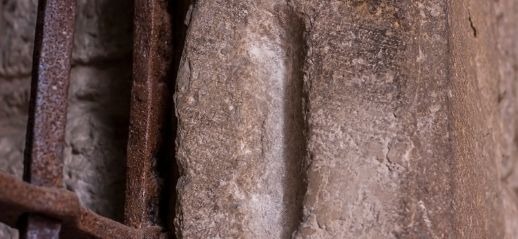
The houses and streets of the call (Jewish quarter) offered the same external appearance as any other point of the medieval city; There was only one physical element that identified a house as the home of a Jewish family: the mezuzah. This rolled parchment contained the biblical verses from Deuteronomy Shema Israel (Listen, Israel) and was placed in a case in a hole made in the right jamb of the doors. Even today some holes for the mezuzah are visible in certain places of the Girona's call.
Foto: Vidicam
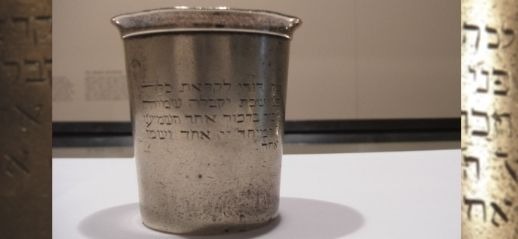
Shabbat corresponds to Saturday (Xabbat in Hebrew), the seventh day of the Hebrew week. It refers to the day of contemplation after the work for the creation of the heavens and the earth in six days, according to the book of Genesis of the Bible. It begins in the evening of Friday and ends the sunset of Saturday. During this day, collective rituals in the synagogue and in the family are combined with moments of interior reflection.
Photo: kiddush cup (for the blessing of wine), 19th century. Central Europe. Uriel Macías deposit.
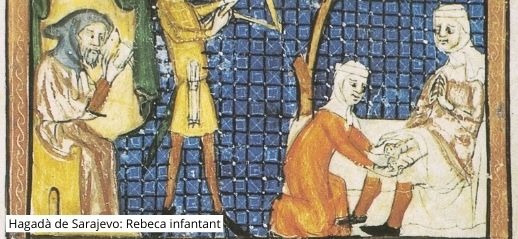
It was a family celebration, held on the seventh night after the birth. According to the confessions of a Valencian convert to the Inquisition (1480), it consisted of immersing the baby in a basin with water, fragrant substances and other elements that symbolized prosperity. After the bath, the child was given the Jewish name and wished good omens and long life.
This ceremony probably had very ancient origins, perhaps in the rituals of the Mediterranean peoples of Roman times. In the documents, it is also mentioned as a premiere party, and in Spanish it is known by the names of 'hadas' or 'albricias'. In the 20th century, the Jewish community of Thessalonica, with roots in medieval Catalonia, still practiced it in a different version, without bathing the creature; This is how Michael Molho relates it in his book “Usos y costumbres de los sefardíes en Salónica” (1943). The "vijola" has been extensively studied by Dr. Dolors Bramon, who has published a very interesting article about this medieval Jewish celebration: La vijola, cerimònia jueva; una nota de fonètica històrica baix llatina i catalana, in the book “Jornades d'Història dels Jueus a Catalunya”(Girona City Council, 1987).
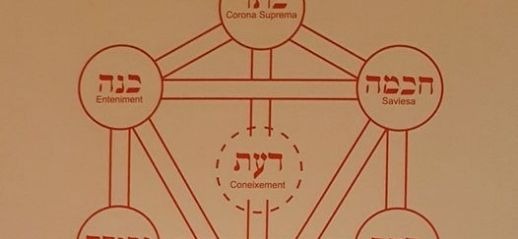
Kabbalah is a set of metaphysical theories, teachings and texts of Jewish mysticism. It became a very important intellectual movement in the Jewish communities of Languedoc and Provence in the 12th century. The fundamental texts of Kabbalistic doctrine were the Bahir, the Book of Brightness, the Sefer Yetzirah, the Book of Creation, and the Zohar, the Book of Radiance.
At the beginning of the 13th century the contacts of Girona scholars with the Provencal schools (Lunel, Narbonne) and above all, with the Cabalist Isaac the Blind (Sagi Nahor) brought the theosophical doctrine to Girona. The greatest Jewish thinker and intellectual of his time, Mossé ben Nahman, from Girona, (Girona, 1194 - Holy Land, 1270), rabbi, doctor and Talmudist philosopher also known as Nahmanides, Bonastruc ça Porta or by the acrostic Ramban, is also He dedicated himself to the study of the mystical science of the Kabbalah, as reflected above all in his poetry. The cabalistic circle and the entire Jewish cultural context of Girona became so important that the city became known as the "Mother City of Israel".
© 2026 Patronat Call de Girona | Contact | Accessibility
